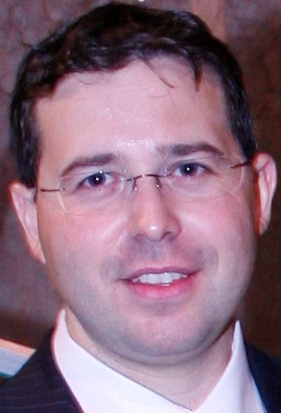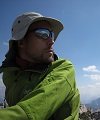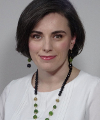Studying at the University of Verona
Here you can find information on the organisational aspects of the Programme, lecture timetables, learning activities and useful contact details for your time at the University, from enrolment to graduation.
Academic calendar
The academic calendar shows the deadlines and scheduled events that are relevant to students, teaching and technical-administrative staff of the University. Public holidays and University closures are also indicated. The academic year normally begins on 1 October each year and ends on 30 September of the following year.
Course calendar
The Academic Calendar sets out the degree programme lecture and exam timetables, as well as the relevant university closure dates..
| Period | From | To |
|---|---|---|
| FISIO VI 3^ ANNO - 1^ SEMESTRE | Oct 1, 2018 | Nov 16, 2018 |
| FISIO VI 2^ ANNO - 1^ SEMESTRE | Oct 1, 2018 | Nov 23, 2018 |
| FISIO VI 1^ ANNO - 1^ SEMESTRE | Oct 15, 2018 | Dec 21, 2018 |
| FISIO VI 2^ ANNO - 2^ SEMESTRE | Mar 4, 2019 | Apr 26, 2019 |
| FISIO VI 1^ ANNO - 2^ SEMESTRE | Mar 4, 2019 | May 10, 2019 |
| FISIO VI 3^ ANNO - 2^ SEMESTRE | Mar 4, 2019 | Apr 13, 2019 |
| Session | From | To |
|---|---|---|
| FISIO VI SESSIONE INVERNALE | Jan 7, 2019 | Feb 1, 2019 |
| FISIO VI SESSIONE ESTIVA | Jul 1, 2019 | Jul 31, 2019 |
| FISIO VI SESSIONE AUTUNNALE | Sep 2, 2019 | Sep 27, 2019 |
| Session | From | To |
|---|---|---|
| FISIO SESSIONE AUTUNNALE | Nov 1, 2019 | Nov 30, 2019 |
| FISIO SESSIONE PRIMAVERILE | Mar 1, 2020 | Mar 31, 2020 |
| Period | From | To |
|---|---|---|
| Festa di Ognissanti | Nov 1, 2018 | Nov 1, 2018 |
| Festa dell’Immacolata | Dec 8, 2018 | Dec 8, 2018 |
| VACANZE DI NATALE | Dec 24, 2018 | Jan 6, 2019 |
| Vacanze di Pasqua | Apr 19, 2019 | Apr 28, 2019 |
| Festa della liberazione | Apr 25, 2019 | Apr 25, 2019 |
| Festa del lavoro | May 1, 2019 | May 1, 2019 |
| Festa della Repubblica | Jun 2, 2019 | Jun 2, 2019 |
| Vacanze estive | Aug 5, 2019 | Aug 18, 2019 |
| Festa S. Patrono Vi | Sep 8, 2019 | Sep 8, 2019 |
| Description | Period | From | To |
|---|---|---|---|
| FISIO VI 3^ anno - 1^semestre (1 periodo) | FISIO VI 3^ anno - 1^semestre (1 periodo) | Nov 19, 2018 | Dec 21, 2018 |
| FISIO VI 2^ anno - 1^semestre (1 periodo) | FISIO VI 2^ anno - 1^semestre (1 periodo) | Nov 26, 2018 | Dec 21, 2018 |
| FISIO VI 1^ anno - 1^semestre | FISIO VI 1^ anno - 1^semestre | Feb 4, 2019 | Mar 1, 2019 |
| FISIO VI 3^ anno - 1^semestre (2 periodo) | FISIO VI 3^ anno - 1^semestre (2 periodo) | Feb 4, 2019 | Mar 1, 2019 |
| FISIO VI 2^ anno - 1^semestre (2 periodo) | FISIO VI 2^ anno - 1^semestre (2 periodo) | Feb 4, 2019 | Mar 1, 2019 |
| FISIO VI 3^ anno - 2^semestre | FISIO VI 3^ anno - 2^semestre | Apr 15, 2019 | Jun 21, 2019 |
| FISIO VI 2^ anno - 2^semestre | FISIO VI 2^ anno - 2^semestre | Apr 29, 2019 | Jun 21, 2019 |
| FISIO VI 1^ anno - 2^semestre | FISIO VI 1^ anno - 2^semestre | May 13, 2019 | Jun 21, 2019 |
Exam calendar
Exam dates and rounds are managed by the relevant Medicine Teaching and Student Services Unit.
To view all the exam sessions available, please use the Exam dashboard on ESSE3.
If you forgot your login details or have problems logging in, please contact the relevant IT HelpDesk, or check the login details recovery web page.
Should you have any doubts or questions, please check the Enrollment FAQs
Academic staff
 marco.carradore@univr.it
marco.carradore@univr.it
 davideconte.bioeng@gmail.com
davideconte.bioeng@gmail.com
Cunico Laura
 laura.cunico@univr.it
laura.cunico@univr.it
Giacomuzzi Renata
 giada.goracci@univr.it
giada.goracci@univr.it
Negrin Rolando
 segreteria.pneumo@ulssvicenza.it
segreteria.pneumo@ulssvicenza.it
 0444/753634
0444/753634
Pighi Michele
 michele.pighi@univr.it
michele.pighi@univr.it
 0458122320
0458122320
Randon Fabio Mario
 bruno.sandini@aulss8.veneto.it
bruno.sandini@aulss8.veneto.it
Scarton Cinzia
Study Plan
The Study Plan includes all modules, teaching and learning activities that each student will need to undertake during their time at the University.
Please select your Study Plan based on your enrollment year.
1° Year
| Modules | Credits | TAF | SSD |
|---|
2° Year activated in the A.Y. 2019/2020
| Modules | Credits | TAF | SSD |
|---|
3° Year activated in the A.Y. 2020/2021
| Modules | Credits | TAF | SSD |
|---|
| Modules | Credits | TAF | SSD |
|---|
| Modules | Credits | TAF | SSD |
|---|
| Modules | Credits | TAF | SSD |
|---|
Legend | Type of training activity (TTA)
TAF (Type of Educational Activity) All courses and activities are classified into different types of educational activities, indicated by a letter.
Kinesiology and functional evaluation (2018/2019)
The teaching is organized as follows:
Learning outcomes
Fornire conoscenze di base riguardanti la fisiologia dei sistemi motori, la biomeccanica, la chinesiologia e le metodiche di valutazione funzionale in fisioterapia.
MODULO: FISIOLOGIA DEI SISTEMI MOTORI Fornire le conoscenze per comprendere la fisiologia del muscolo scheletrico striato e i meccanismi neurofisiologici del controllo motorio. Conoscere l'organizzazione e la funzione dei sistemi che governano il movimento del corpo umano.
MODULO: BIOMECCANICA E CHINESIOLOGIA SEGMENTALE Comprendere ed analizzare gli aspetti meccanici del movimento basandosi su concetti legati alla cinematica e alla dinamica del movimento umano. 5 Descrivere i movimenti articolari fisiologici ed accessori. Comprendere i fattori biomeccanici che influenzano la capacità di un muscolo di erogare forza. Data un’articolazione, analizzare e rappresentare graficamente le forze in gioco su di essa calcolando i momenti interni ed esterni sia in contesti statici che dinamici. Descrivere le proprietà inerziali e le forze di attrito e comprendere come queste influenzino il movimento umano sia in un contesto locale che globale. Conoscere le proprietà viscoelastiche dei tessuti. Conoscere la fisiologia delle articolazioni del corpo umano e analizzare le azioni muscolari, gli stress e gli stiramenti della componente articolare e la biomeccanica specifica. Eseguire, in ottica clinica, un'analisi del movimento dal punto di vista meccanico tenendo conto dei seguenti domini: cinematica, cinetica, ruoli muscolari, sistemi di leva, sistemi inerziali e altre variabili.
MODULO: CHINESIOLOGIA FUNZIONALE Comprendere i concetti di catena muscolare, muscoli sinergici, agonisti / antagonisti, stabilizzatori in relazione al gesto funzionale generale. Conoscere la biomeccanica dei movimenti funzionali fisiologici della colonna, delle posizioni statiche (supino, seduto, in piedi) e dei gesti funzionali fisiologici di base che coinvolgono più articolazioni (passaggi posturali). Conoscere e valutare la biomeccanica dei movimenti funzionali degli arti superiori (raggiungimento, presa, manipolazione) Conoscere e valutare la biomeccanica dei movimenti funzionali degli arti inferiori (deambulazione, salita/discesa delle scale). Sapere descrivere le alterazioni delle posture, dei passaggi posturali e dei gesti funzionali (deambulazione, salita/discesa delle scale, raggiungimento-presa-manipolazione di oggetti) e ipotizzarne per lo meno in via generale i possibili determinanti biomeccanici.
MODULO: VALUTAZIONE FUNZIONALE IN FISIOTERAPIA Eseguire la valutazione articolare e muscolare di tutti i distretti corporei riconoscendo le alterazioni quantitative e qualitative, la misurazione circonferenziale degli arti, la valutazione dei principali parametri cardiocircolatori e respiratori. Integrare i dati rilevati con l’osservazione delle alterazioni di posture e gesti. Conoscere le scale di valutazione in fisioterapia per la valutazione di fenomeni complessi con le relative proprietà psicometriche. Somministrare correttamente scale di valutazione autosomministrate o etero somministrate.
Program
------------------------
MM: CHINESIOLOGIA FUNZIONALE
------------------------
------------------------
MM: FISIOLOGIA DEI SISTEMI MOTORI
------------------------
The first part of the course will deal will the cellular membrane properties, the mechanics of muscle contraction and the features of motor units. The second part will take into consideration the control mechanisms of posture and voluntary movement, as well as the influence of basal ganglia and cerebellum on movement control. - General facts about movement control - Functional anatomy of scheletal muscle and mechanisms underlying muscle contraction - The neuromuscular junction: excitation of scheletal muscle - Properties and classification of motor units - Spinal mechanisms of motor coordination - Control of posture and equilibrium - Control of voluntary movement - Basal ganglia and movement - Cerebellum and movement
------------------------
MM: BIOMECCANICA E CHINESIOLOGIA SEGMENTALE
------------------------
-Define the movement planes, the anatomical position and the classification of joint movements with the relative exceptions. Define the reference systems and the vectors. -Define the characteristics of the laws of gravity applied to the human body, the tables of the linear somatic dimensions, the weighted dimensions and the distances of the centers of gravity from the fulcrums - Identify the vector of muscle strength based on the anatomy of the muscle by choosing the point of application, the direction, the verse and the module, and decomposing it into the rotational and axial components, constructing the biomechanical rectangle and using the main trigonometric formulas - To identify the principle of muscle reciprocity and the main mechanical factors that influence the intensity of muscle tension: type of contraction, orientation of muscle fibers; voltage / length ratio and speed voltage -Define the friction forces applied to the human body, the concepts of closed and open kinetic chain and the main examples applied to the human body -Analize a segmental gesture by identifying the external and internal forces, considering the relative moments with respect to one or more appropriately chosen axes and drawing an explanatory diagram -Describing the curves of the spine as a whole, the type vertebra, the elements of intervertebral connection and functional divisions of the rachis, the physiology of the intervertebral disc. Describe the movements of the spine as a whole -Describe the articular physiology of the lumbar spine as a whole, its movements and the normal limiting factors, the action of the muscles acting on it, the static of the lumbar spine in an upright position -Describe the joint physiology of the dorsal spine as a whole, its movements and the normal limiting factors, the action of the muscles acting on it, Describe the joint physiology of the cost-vertebral and sternocostal joints, the deformations of the thorax during inhalation and the exhalation and actions of the muscles of the breathing and the relationships between the diaphragm and the abdominal muscles -Describe the joint physiology of the cervical spine as a whole and in detail deisuoisegmentisuperioreand inferior, the relative movements and limiting factors normal, the action of the muscles acting on it, the balance of the head on the cervical spine -Describe the articular physiology of the temporomandibular joint and the action of the muscles acting on it -Describe the joint physiology of the shoulder girdle as a whole and its joints, the relative movements and the normal limiting factors, the action of the muscles acting on it, the factors of coactation of the glenohumeral joint -Describe the joint physiology of the joint complex of the elbow and the radio-ulnar joints, the relative movements and the normal limiting factors, the action of the muscles acting on them, the factors of joint elbow contraction -Describe the joint physiology of the wrist, the joints of the long fingers and the thumb, the relative movements and the normal limiting factors, the action of the muscles acting on it -Describe the architecture and the position of function of the hand as a whole and the kinesiology of the prehension -Describe the architecture and the physiology of the pelvic girdle and of the sacro-iliac joints, of the coxo-femoral joint, the relative movements and the normal limiting factors, the action of the muscles acting on it -Describe the joint physiology of the knee joint complex, its movements and the normal limiting factors, the action of the muscles acting on it, the stability factors of the knee -Describe the articular physiology of the tibio-tarsics, relative movements and the normal limiting factors, the action of the muscles acting on it, the stability factors of the tibio-tarsics -Describe the joint physiology of the joints of the foot and fingers, the relative movements and normal limiting factors, the action of the muscles acting on them. -Describe the general architecture of the plantar vault, the general distribution of loads and deformations, the adaptation of the plantar vault to the ground
------------------------
MM: VALUTAZIONE FUNZIONALE IN FISIOTERAPIA
------------------------
Bibliography
| Author | Title | Publishing house | Year | ISBN | Notes |
|---|---|---|---|---|---|
| Bear, Connors, Paradiso | Neuroscienze. Esplorando il cervello (Edizione 4) | Edra | 2016 | ||
| Purves, Augustine, Fitzpatrick, Hall, LaMantia e White | Neuroscienze (Edizione 4) | Zanichelli | 2013 | Quarta edizione italiana condotta sulla quinta edizione americana | |
| Kandel e coll. | Principi di Neuroscienze (Edizione 4) | Ambrosiana | 2015 | 9788808184450 | |
| KAPANDJI I.A. | Fisiologia articolare, 3 voll. | Monduzzi, Bologna | 1999 | ||
| Kendall, McCreary, Provance | I muscoli: funzioni e test | 2005 | |||
| Clarkson H.M. | Valutazione cinesiologica. Esame della mobilità articolare e della forza muscolare. (Edizione 2) | Edi-ermes | 2002 |
Examination Methods
------------------------ MM: CHINESIOLOGIA FUNZIONALE ------------------------ ------------------------ MM: FISIOLOGIA DEI SISTEMI MOTORI ------------------------ Exam in written form, oral integration on request. ------------------------ MM: BIOMECCANICA E CHINESIOLOGIA SEGMENTALE ------------------------ Aims: To pass the exam students must demonstrate that they have learned the theoretical contents of this teaching. Contents: The exam content covers all the topics covered in class and reported in full in the program of this course. Assessment methods: - written test (multiple choice test) - oral exam by interview with the teacher; Evaluation method: - written test (score from 0-30); - oral test (score from 0-30); The final grade will be given by the average of the two individual tests and will be expressed in 30ths. There are no exam differences between attending and non-attending students. ------------------------ MM: VALUTAZIONE FUNZIONALE IN FISIOTERAPIA ------------------------
Career prospects
Module/Programme news
News for students
There you will find information, resources and services useful during your time at the University (Student’s exam record, your study plan on ESSE3, Distance Learning courses, university email account, office forms, administrative procedures, etc.). You can log into MyUnivr with your GIA login details: only in this way will you be able to receive notification of all the notices from your teachers and your secretariat via email and soon also via the Univr app.
Graduation
Documents
| Title | Info File |
|---|---|
|
|
pdf, it, 367 KB, 19/02/24 |
|
|
pdf, it, 142 KB, 19/01/24 |
|
|
pdf, it, 862 KB, 19/01/24 |
|
|
pdf, it, 273 KB, 25/03/24 |
Gestione carriere
Student login and resources
Appelli d'esame
Si pubblicano gli appelli per la sessione estiva per il 2° anno A.A 2023/2024
Si pubblicano gli appelli per la sessione invernale per il 1° e 3° anno A.A. 2023/2024
Documents
| Title | Info File |
|---|---|
|
|
pdf, it, 417 KB, 29/11/23 |
|
|
pdf, it, 419 KB, 08/04/24 |
|
|
pdf, it, 414 KB, 29/11/23 |
Orario lezioni
AVVISO ACCOGLIENZA STUDENTI 1° A a.a 2023/2024
CALENDARIO DIDATTICO 2023/2024
Si pubblica il calendario dellle lezioni 3° anno 2 semestre 2023/2024
AGGIORNAMENTO 7 MARZO 2024 Calendario lezioni 1° A 2° semestre
Documents
| Title | Info File |
|---|---|
|
|
pdf, it, 215 KB, 07/03/24 |
|
|
pdf, it, 114 KB, 21/09/23 |
|
|
pdf, it, 156 KB, 12/10/23 |
|
|
pdf, it, 229 KB, 06/02/24 |
Attività Seminariali/a scelta dello studente
Attività Seminariali/a scelta dello studente





























